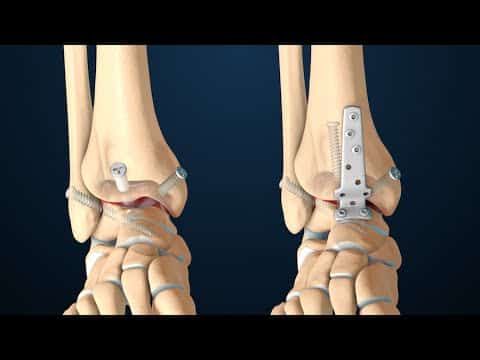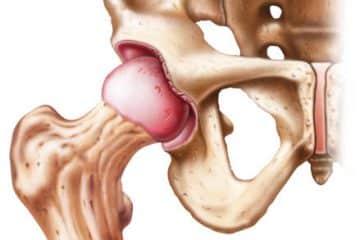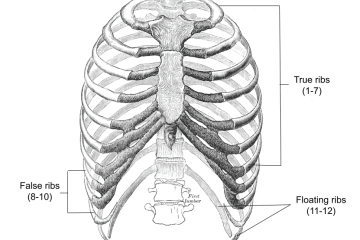Ankle Fusion Surgery
Ankle fusion surgery, also known as ankle arthrodesis, is a surgical procedure carried out on the ankle to fuse the bones in order to treat arthritis. There are different types of ankle fusion surgery.
Ankle fusion surgery is performed to relieve pain of an arthritic ankle and it is considered to be the gold standard for treatment of end-stage ankle arthritis.
Complications of ankle arthrodesis may include infection, non-union and amputatiion.

More: Spinal Fusion Surgery
Types of Ankle Fusion Surgery
There are different types of ankle fusion surgery depending on the location and surgical approach. They include:
- Open ankle fusion surgery
The surgeon makes an incision in the ankle, then surgically removes the damaged cartilage surfaces from the joint. This creates a level bone surface to help aid in fusion. The surrounding bones that attach to the joint are then aligned properly and large metal screws are inserted to hold the bones together while they fuse.
- Arthroscopic ankle fusion surgery
During this procedure, the surgeon uses an instrument called an arthroscope to help with the fusion. An arthroscope is a miniature camera inserted into the ankle joint through a small incision, allowing the surgeon to see within the ankle during the procedure. The surgeon then inserts other instruments into the ankle to remove the cartilage surfaces from the joint. Once the surface of the joint is prepared, screws are then inserted through small incisions in the bones to support them as they fuse together.
- Hindfoot fusion
This type of foot fusion surgery consists of fusing one or more of the three joints in the hindfoot region. If only the subtalar joint is being fused, then one incision will be made on the outside of the foot below the ankle. Double and triple fusion will require an extra incision to be made on the inside of the foot. After the surgeon removes the damaged cartilage and aligns the joints and bones properly, metal screws are inserted to keep the bones in place while they fuse.
- Midfoot fusion
This procedure involves the fusion of one or more of the joints in the midfoot section. Sometimes all of the joints in the midfoot need to be fused together. The surgeon will remove the damaged cartilage, realign the bones properly and insert metal fixations to keep the bones in place as they heal together.
- Great toe fusion
This foot fusion surgery aims to properly align and immobilize the joint of the great toe. After the cartilage is removed from the affected joint, the bone is prepared for fusion. The joint is then positioned in order to maximize the walking ability and maintain a weight-bearing position and is fixated with screws or a plate to maintain proper placement as the bone fuses.
- Tibiotalocalcaneal arthrodesis
Tibiotalocalcaneal (TTC) arthrodesis is a special type of ankle fusion. It is used in select situations, for instance as salvage therapy in severe complicated cases or in other situations. Although the procedure results in a rigid ankle and hindfoot, it is often the only means of providing patients with a stable and painless foot and ankle for ambulation. Some patients who require the procedure have a substantial bone loss that can be managed with a variety of autograft and allograft options.
More: Types of Hip Surgery
Risks and Complications
As with any surgical procedure, ankle fusion surgery comes with several risks. These include:
– An infection of the skin or bone
– Bleeding or hematoma
– Damage to nearby structures in the ankle
– Nonunion, which refers to failure of the bones to heal properly
Ankle Fusion Surgery Cost
The total cost for ankle fusion surgery depends on a lot of factors such as the anesthetic fee, private hospital fee, private operating facility fee, and extent of surgery required. The total cost of the procedure is around $7500 – $17500.
Ankle Fusion Surgery Recovery
In the days after surgery, it is important to keep the foot elevated as much as possible in order to reduce swelling. The foot may be in a cast or padded splint to prevent movement and reduce the risk of the bones being jostled out of position.
It is important that the patient avoid putting weight on the affected foot for up to 12 weeks after the surgery. During this time, the patient may find it helpful to use crutches or a walker or knee scooter. The surgeon will get periodic X-rays to confirm proper alignment and healing. Once the joint or joints have healed sufficiently, the patient can gradually introduce weight-bearing activities. If necessary, the doctor will prescribe physical therapy involving post-operative exercises.


